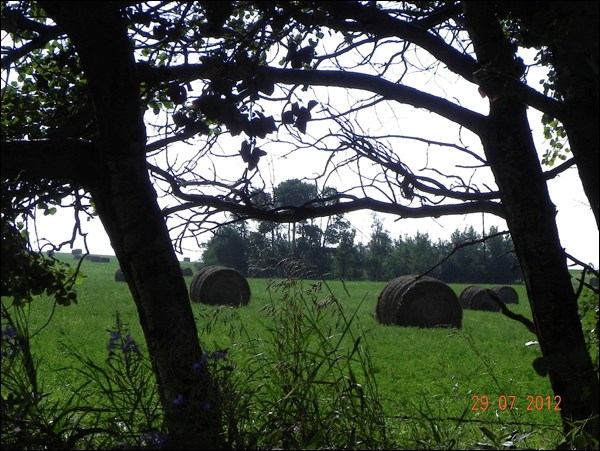Winter it's hard to think about winter when it's 30 C outside and you're thinking about heading to the lake. The reality is, the grazing season is coming to an end. Are you ready for winter feeding?
Stockpiled forages can provide an economical late fall, winter or early spring feed depending on location and snow cover. On the southern prairies, winter grazing on native range is common. In the Parkland and Boreal forest regions, snow depth often limits winter grazing of standing forage. However, the grazing season may be extended by several weeks by using stockpiled forage in late fall and early spring in these regions.
Stockpiling forages simply means allowing growth to accumulate during the growing season to be grazed during the winter months. The general recommendation is to take a last cutting, clipping or grazing pass in early to mid-August and then let the pastures regrow and accumulate forage (stockpile) until the end of the growing season. Stockpiling grass in the late summer through fall period also benefits the grass plant. This is a critical time for the grass plant to store carbohydrate root reserves that allow the plant to over-winter and that aid in the green up and vigor of new growth in the spring.
Any forage has the potential to be stockpiled, but some species are better suited than others. Research done in central Alberta has shown that with a long rest period between harvest (early July) and stockpile grazing (as early as mid-September), smooth and meadow bromegrasses have ranked high for yield over a range of summer and fall moisture conditions; however, smooth bromegrass has high overwinter dry matter loss, making meadow bromegrass more suited for stockpiling. Orchardgrass and timothy, although good at retaining quality over winter, also succumb to higher overwinter dry matter losses compared to meadow brome. Legumes are not an ideal choice for stockpiling because they lose their leaves after several heavy frosts in the fall. Since the leaves are the most nutritious part of the plant, forage quality declines rapidly with leaf loss and dry matter losses are large. Cicer milkvetch will retain more leaves and good quality longer than alfalfa. If you are going to use legumes as part of a stockpiled forage grazing system alfalfa is best utilized from mid-September to early October, cicer milkvetch retains leaves and quality into October, but should be utilized before the onset of November.
Forage quality in a stockpiled grazing system is affected by the quality of the grasses before freeze-up. Quality of grasses in the fall is affected by the preceding soil moisture and nutrient conditions. Plants that have entered a dormant state due to dry conditions before frost and snowfall will have leaves with lower nutrient content than plants that were actively growing in the middle of the growing season under good climatic conditions. Live green leaves have higher quality than dead leaves.
For more information on this, or other related livestock topics, please contact Jenifer Heyden at (306) 446-7961 or the Agriculture Knowledge Centre at 1-866-457-2377.
- Heyden is Regional Livestock Specialist, North Battleford Regional Services Branch




